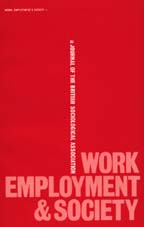No CrossRef data available.
Article contents
UNEMPLOYMENT AND UNEMPLOYMENT BENEFITS IN THE OECD 1960–1990 – AN EMPIRICAL TEST OF NEO-CLASSICAL ECONOMIC THEORY
Published online by Cambridge University Press: 01 March 2000
Abstract
The role of unemployment benefits in explaining the rise and apparent persistence of OECD unemployment has attracted a great deal of scholarly as well as political interest. The disincentive effect of unemployment benefits has mostly been studied with micro-level data, whereas the importance of different unemployment regimes for explaining cross-national differences in unemployment rates has been a rather unexplored area of research. For the purpose of this article, data was collected on the duration and replacement levels of unemployment benefits for an average production worker in 17 OECD countries for the period 1960–1990. This data was then related to the level and trends in unemployment in these countries. The results indicate that there is no systematic evidence that countries with more generous unemployment have experienced higher levels of unemployment, nor that reforms to increase the generosity of unemployment benefits have caused unemployment rates to increase. However, there are some indications that a few countries with relatively long benefit duration experienced a relatively large increase in their unemployment rates in the mid-1970s.
- Type
- Research Article
- Information
- Copyright
- © 2000 BSA Publications Ltd




